
At the end of 2020, there were over 82.4 million refugees worldwide, and approximately half of these were younger than 18 years old (UNHCR, 2021). Many of these children and young people have experienced considerable adversity and trauma before and during migration, including living through war, witnessing events of violence, the torture or murder of family members, parental imprisonment, separation from parents, personal injury, and living in a refugee camp. Perhaps unsurprisingly, a large body of research has found a link between these experiences and refugee children’s increased risk of developing mental health issues (Frounfelker et al., 2020; Hodes & Vostanis, 2019).
We know that the post-arrival and resettlement stages are critical for young refugees. Importantly, experiences during this period have been associated with both positive and negative effects on mental health (Fazel, Reed, Panter-Brick, & Stein, 2012; Hadfield, Ostrowski, & Ungar, 2017), with the provision of support being identified as one protective factor (Fazel et al., 2012; Mohamed & Thomas, 2017; Zwi et al., 2018). However, research has noted a scarcity of high quality studies on effective models and strategies for supporting young refugees’ mental health. The research that does exist, suggests that school- and community-based supports may be effective (Crooks, Smith, Robinson-Link, Orenstein, & Hoover, 2020; Sullivan & Simonson, 2016; Tyrer & Fazel, 2014; Walker & Zuberi, 2020).
In the current Canadian study, Herati and Meyer (2020) carry out a scoping review on the psychosocial needs of immigrant and refugee children and youth, as well as guidelines for community- and school-based mental health programmes targeting this group. The authors’ stated aim is to gather information for practitioners and policymakers in anticipation of the Canadian government’s commitment to welcome over one million new immigrants between 2020 and 2022, including a significant number of refugees.
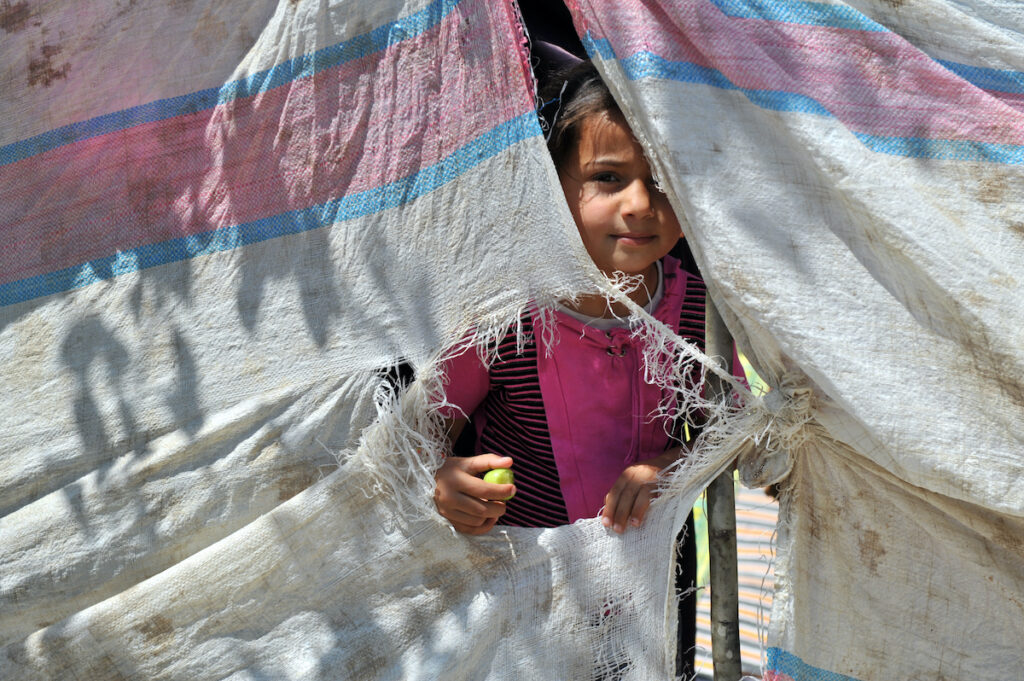
Refugee children experience considerable adversity, so it is critical that good quality mental health support is provided post-arrival.
Methods
Arkey and O’Malley’s (2005) five-stage scoping review framework was utilised. The research question was “What are the facilitators and barriers identified in the existing literature that need to be considered in adopting community-/school-based mental health programmes for immigrant and refugee children and youth living in Canada?”. The authors searched PubMed, CINAHL, ERIC, PsycINFO and Scopus databases.
The inclusion criteria did not include any information about age, although search terms included the following: “youth”, “teenager”, “adolescent”, “adolescence”, “child”, “children”. In addition, one of the exclusion criteria was reported as “middle-old aged groups only”, but the definition of this demographic was unclear. Grey literature was identified through a Google search; however, the search terms were not reported. The authors report that “the contents which were consistent with the academic literature were selected”; again, this is not very clear. Together, these issues lead me to query whether the search and identification of studies is replicable as published.
Twenty articles and documents were included in the scoping review; 15 of these were peer-reviewed articles. Of these 15, seven reported on studies conducted in the city of Montreal specifically. The quality of studies was not assessed, however this is not typically done in a scoping review (Peters et al., 2015).
Results
The authors grouped their findings into two categories, within which subcategories were nested:
- Psychosocial needs of immigrant and refugee children and youth resettled in Canada in the context of their school/community;
- Characteristics of, and guidelines for, community- or school-based mental health programmes for immigrant and refugee children and youth in Canada.
1. Psychosocial needs
Family and home environment
Family conflict and parental mental health issues are associated with emotional and behavioural issues for children and young people. A whole-family approach to care was therefore recommended. Parents’ low level of mental health literacy was also identified as a potential barrier to their children accessing mental health supports. However, the authors noted that this is a modifiable factor; if targeted with psychoeducation, parents’ knowledge could potentially help to increase the likelihood of engagement with services.
School environment
Inclusive school environments were found to enhance feelings of safety, and subsequently increase children’s social and emotional wellbeing. Schools were also identified by young people and their parents as an important site of mental health service provision; however, issues of privacy and confidentiality were noted. Research, thus, highlighted the importance of trust and rapport building, as well as continuity of care.
2. Guidelines for programmes
Effective programmes were found to involve some or all of these elements:
Creative and expressive activities
The review identified drama-based, narrative and storytelling, and play-based programmes as effective strategies for children and young people to express their emotions and practice strategies for coping with trauma, anxiety, and stress. Notably, these activities were culturally-appropriate, and involved both verbal and non-verbal participation, which was particularly key for preschool-aged children.
Cultural and linguistic competency
Cultural brokers can provide both formal support (i.e., connecting children and families to mental health practitioners in a culturally appropriate way) and informal support (i.e., enhancing children’s sense of belonging and easing the adaptation process).
Collaborative care
Guidelines on best practice endorsed mental health promotion programmes that focused on empowerment and community capacity-building. An emphasis was placed on cultural-appropriateness and responsiveness, the involvement of the family in decision-making and priority-setting, and collaboration with multiple stakeholders.
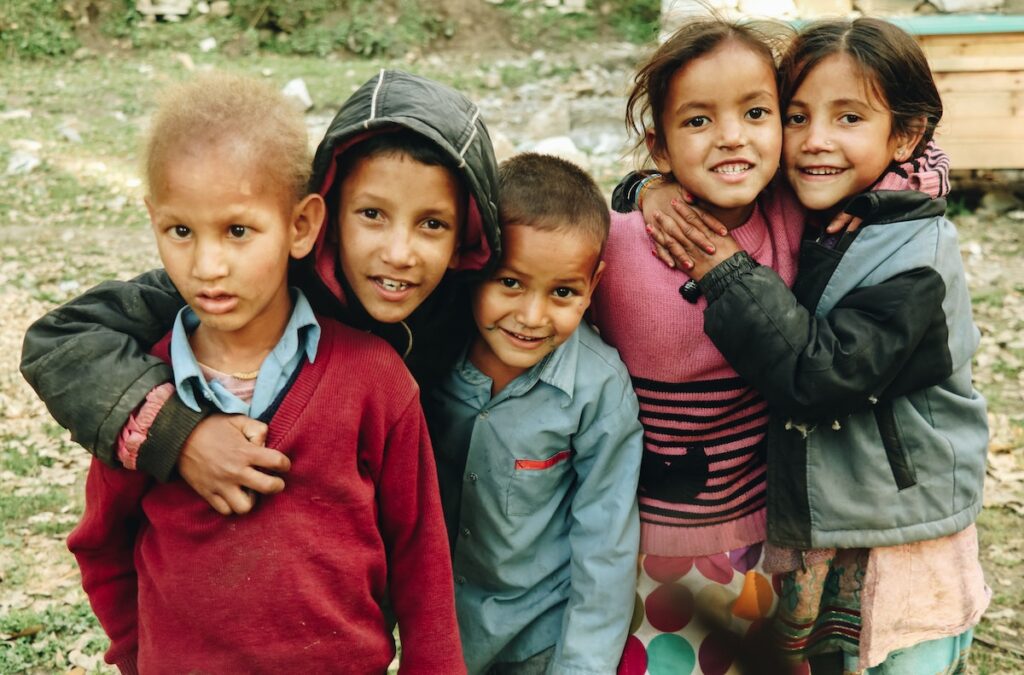
Culturally-appropriate programmes involving the family, school, and wider community, and incorporating creative and expressive activities, are likely to be most effective.
Conclusions
The authors concluded that “collaborative care models are an effective approach to addressing mental health issues”, and highlighted the importance of school, community, and family partnerships.
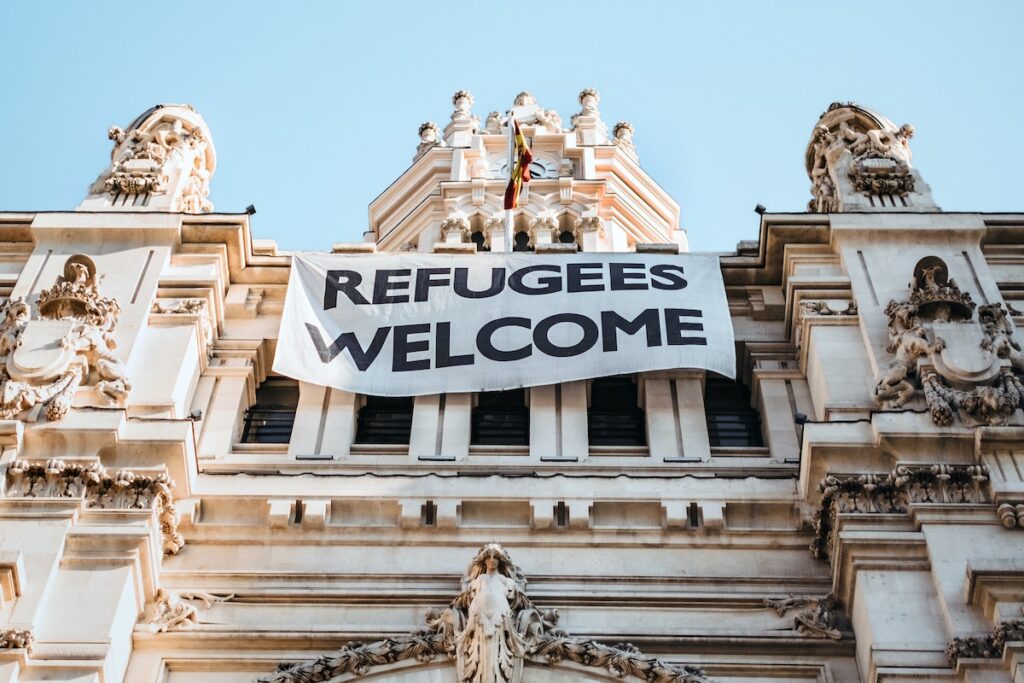
Collaborative care models were highlighted by the authors as being particularly effective.
Strengths and limitations
This study was timely and relevant; contributing useful information for policymakers and practitioners, especially as it responded to an anticipated need. The results clearly underline the importance of multilevel collaborative care (i.e., care that involves the family, the school, and the community). This approach aligns neatly with recent conceptualisations of the factors influencing refugee children’s mental health (Arakelyan & Ager, 2021).
For international readers, the review may be limited by its focus on Canada, and indeed most of the included peer-reviewed studies were conducted in the city of Montréal specifically. While I imagine that the results are still valuable for audiences in many high-income Western countries, it is important to acknowledge that, globally, the majority of refugees have been resettled in lower- and middle-income countries (UNHCR, 2021).
This review is positioned as a response to the Canadian government’s 2020-2022 Immigration Levels Plan, which includes refugees as one category of immigrant. The review, therefore, included research with immigrant (including second-generation) and refugee children, and did not separate these in analyses. Although many issues may be shared by all migrant children (regardless of protection status), it is likely that specific stressors are experienced by children and young people who have been forcibly displaced. As such, it seems logical that interventions should account for this specificity; indeed, the included studies on drama workshops noted different effects for newly arrived and first-generation immigrants compared to second-generation immigrant young people. This evokes recent calls for researchers and policymakers to adopt a more granular approach when talking about individuals from ethnic minority backgrounds (Khunti, Routen, Pareek, Treweek, & Platt, 2020).
The authors do call attention to the need to address structural and systemic barriers affecting immigrant and refugee children’s access to mental health care. However, this did not appear to be addressed by any of the included studies, nor was the impact of racism on children and young people’s mental health and wellbeing (Priest et al., 2013).
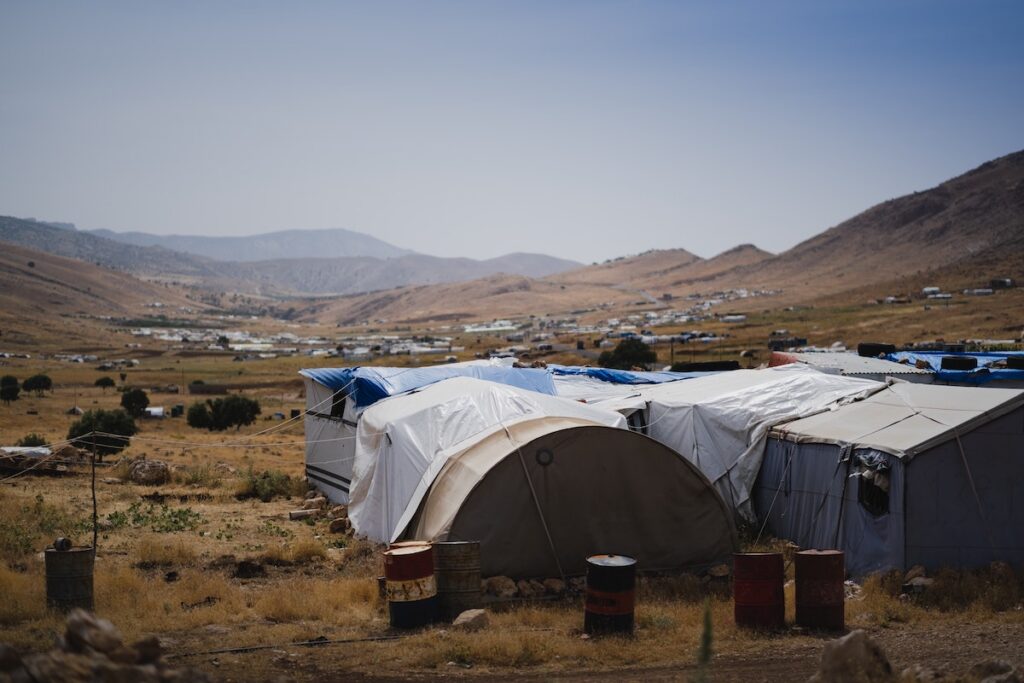
The study may have been strengthened by considering the specific needs of refugee children beyond those of immigrant children more broadly.
Implications for practice
To effectively establish multilevel collaborative models of care, schools and mental health services should prioritise the development of partnerships with community-based organisations. This is essential to resolve issues of power imbalance, and to ensure cultural safety.
Given that younger age at immigration has been found to be associated with greater impairments in mental health in later life (Alegría, Sribney, Woo, Torres, & Guarnaccia, 2007; Breslau, Borges, Hagar, Tancredi, & Gilman, 2009), the identification of effective programmes that can be implemented with preschool-aged children is important. Creative and expressive activities may be particularly useful for this age group. Indeed, other research has noted positive feedback from school-aged refugee children about activities that do not rely on knowledge of the English language, such as art and sport (Due, Riggs, & Augoustinos, 2016).
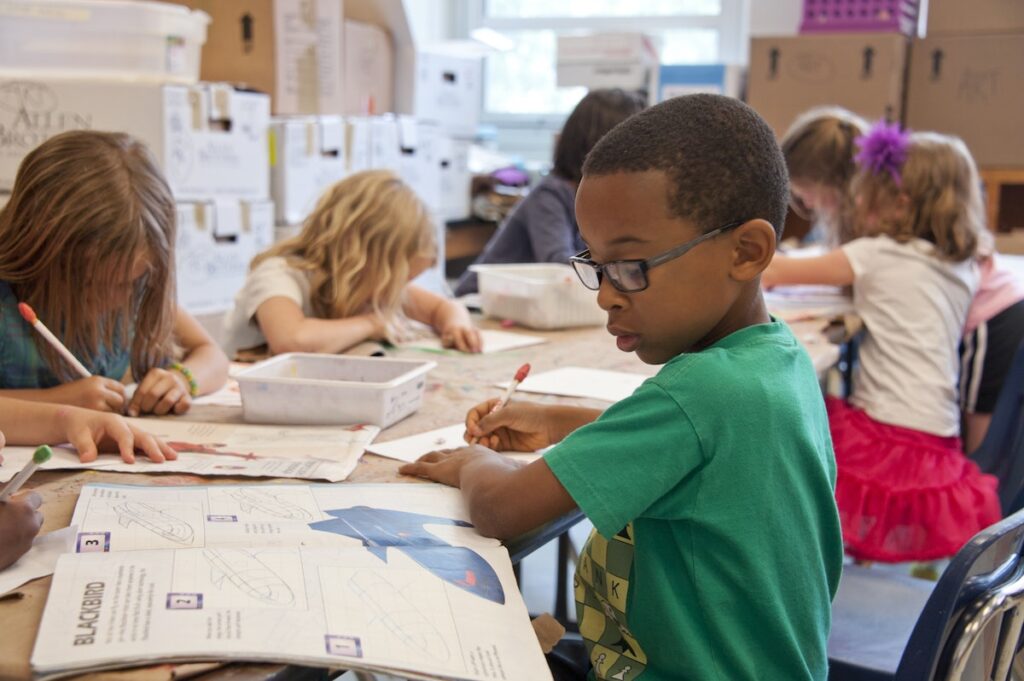
Schools and mental health services should prioritise the development of partnerships with community-based organisations in order to implement collaborative care models.
Statement of interests
Dr Sadhbh Byrne is a postdoctoral research fellow on the REFUGE-ED project, which explores best practice for increasing academic success and wellbeing of migrant and refugee children in educational settings.
Links
Primary paper
Herati, H., & Meyer, S. B. (2020). Mental health interventions for immigrant-refugee children and youth living in Canada: a scoping review and way forward, 1-14. doi:10.1080/09638237.2020.1818710
Other references
Alegría, M., Sribney, W., Woo, M., Torres, M., & Guarnaccia, P. (2007). Looking beyond nativity: The relation of age of immigration, length of residence, and birth cohorts to the risk of onset of psychiatric disorders for Latinos. Research in human development, 4(1-2), 19-47.
Arakelyan, S., & Ager, A. (2021). Annual Research Review: A multilevel bioecological analysis of factors influencing the mental health and psychosocial well‐being of refugee children. Journal of child psychology and psychiatry, 62(5), 484-509.
Arksey, H., & O’Malley, L. (2005). Scoping studies: towards a methodological framework. International Journal of Social Research Methodology, 8(1), 19-32.
Breslau, J., Borges, G., Hagar, Y., Tancredi, D., & Gilman, S. (2009). Immigration to the USA and risk for mood and anxiety disorders: variation by origin and age at immigration. Psychological medicine, 39(7), 1117-1127.
Crooks, C. V., Smith, A. C., Robinson-Link, N., Orenstein, S., & Hoover, S. (2020). Psychosocial interventions in schools with newcomers: A structured conceptualization of system, design, and individual needs. Children and Youth Services Review, 112, 104894.
Due, C., Riggs, D. W., & Augoustinos, M. (2016). Experiences of school belonging for young children with refugee backgrounds. The Educational and Developmental Psychologist, 33(1), 33-53.
Fazel, M., Reed, R. V., Panter-Brick, C., & Stein, A. (2012). Mental health of displaced and refugee children resettled in high-income countries: risk and protective factors. The Lancet, 379(9812), 266-282.
Frounfelker, R. L., Miconi, D., Farrar, J., Brooks, M. A., Rousseau, C., & Betancourt, T. S. (2020). Mental health of refugee children and youth: epidemiology, interventions, and future directions. Annual Review of Public Health, 41, 159-176.
Hadfield, K., Ostrowski, A., & Ungar, M. (2017). What can we expect of the mental health and well-being of Syrian refugee children and adolescents in Canada? Canadian Psychology/psychologie canadienne, 58(2), 194.
Hodes, M., & Vostanis, P. (2019). Practitioner Review: Mental health problems of refugee children and adolescents and their management. Journal of child psychology and psychiatry, 60(7), 716-731.
Khunti, K., Routen, A., Pareek, M., Treweek, S., & Platt, L. (2020). The language of ethnicity. BMJ, 371, m4493. doi:10.1136/bmj.m4493
Mohamed, S., & Thomas, M. (2017). The mental health and psychological well-being of refugee children and young people: An exploration of risk, resilience and protective factors. Educational Psychology in Practice, 33(3), 249-263.
Palfreyman, L. Mental health therapy for refugee and asylum seeking children: a small evidence base for a big problem. The Mental Elf, 7 Jan 2015.
Peters, M. D., Godfrey, C. M., Khalil, H., McInerney, P., Parker, D., & Soares, C. B. (2015). Guidance for conducting systematic scoping reviews. JBI Evidence Implementation, 13(3), 141-146.
Priest, N., Paradies, Y., Trenerry, B., Truong, M., Karlsen, S., & Kelly, Y. (2013). A systematic review of studies examining the relationship between reported racism and health and wellbeing for children and young people. Social science & medicine, 95, 115-127.
Sullivan, A. L., & Simonson, G. R. (2016). A systematic review of school-based social-emotional interventions for refugee and war-traumatized youth. Review of Educational Research, 86(2), 503-530.
Tyrer, R. A., & Fazel, M. (2014). School and community-based interventions for refugee and asylum seeking children: a systematic review. PloS one, 9(2), e89359.
UNHCR. (2021). Figures at a glance. Last accessed: 15 July 2021.
Walker, J., & Zuberi, D. (2020). School-aged Syrian refugees resettling in Canada: Mitigating the effect of pre-migration trauma and post-migration discrimination on academic achievement and psychological well-being. Journal of international migration and integration, 21(2), 397-411.
Zwi, K., Woodland, L., Williams, K., Palasanthiran, P., Rungan, S., Jaffe, A., & Woolfenden, S. (2018). Protective factors for social-emotional well-being of refugee children in the first three years of settlement in Australia. Archives of disease in childhood, 103(3), 261-268.
Photo credits
- Photo by Sam Mann on Unsplash
- Photo by Siddhant Soni on Unsplash
- Photo by Levi Meir Clancy on Unsplash
- Photo by Maria Teneva on Unsplash
- Photo by CDC on Unsplash
